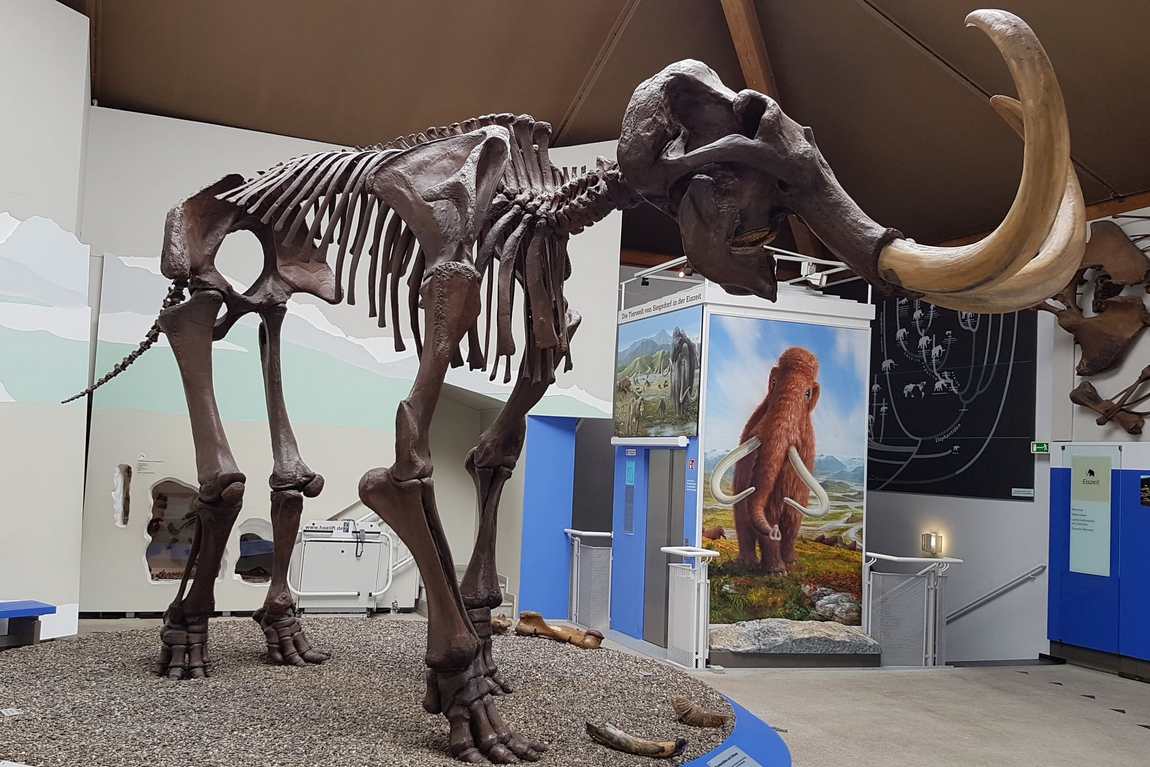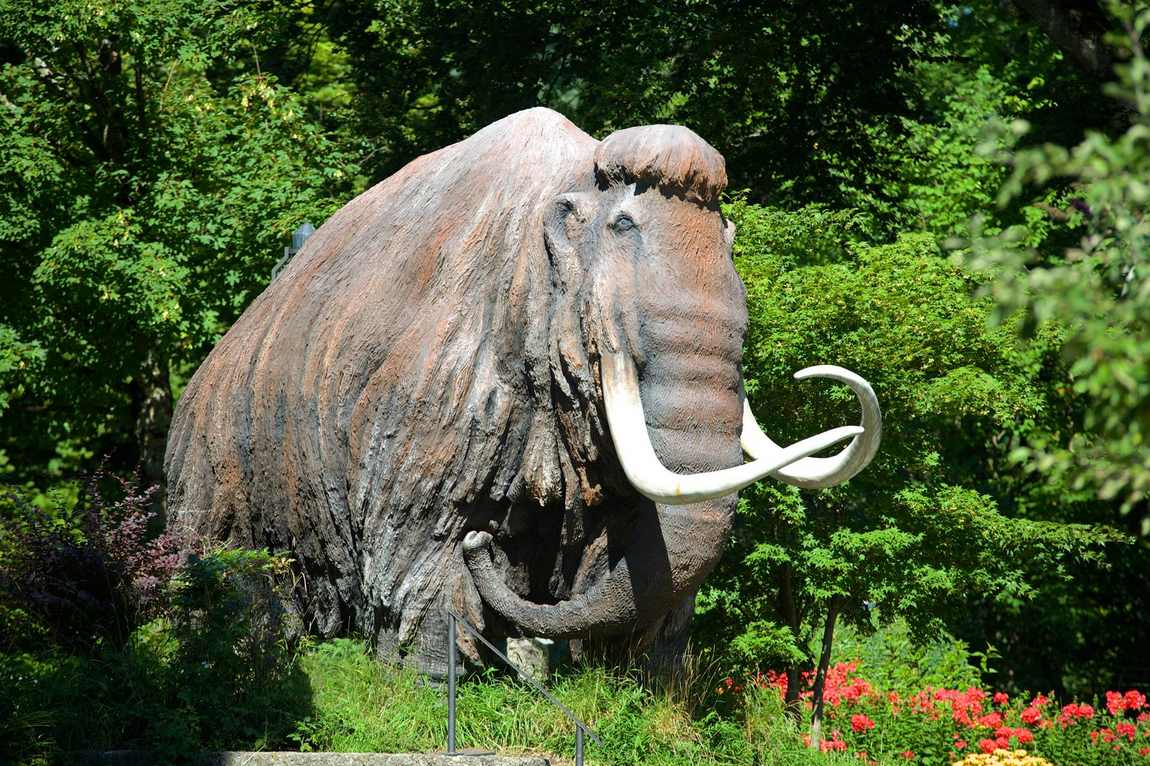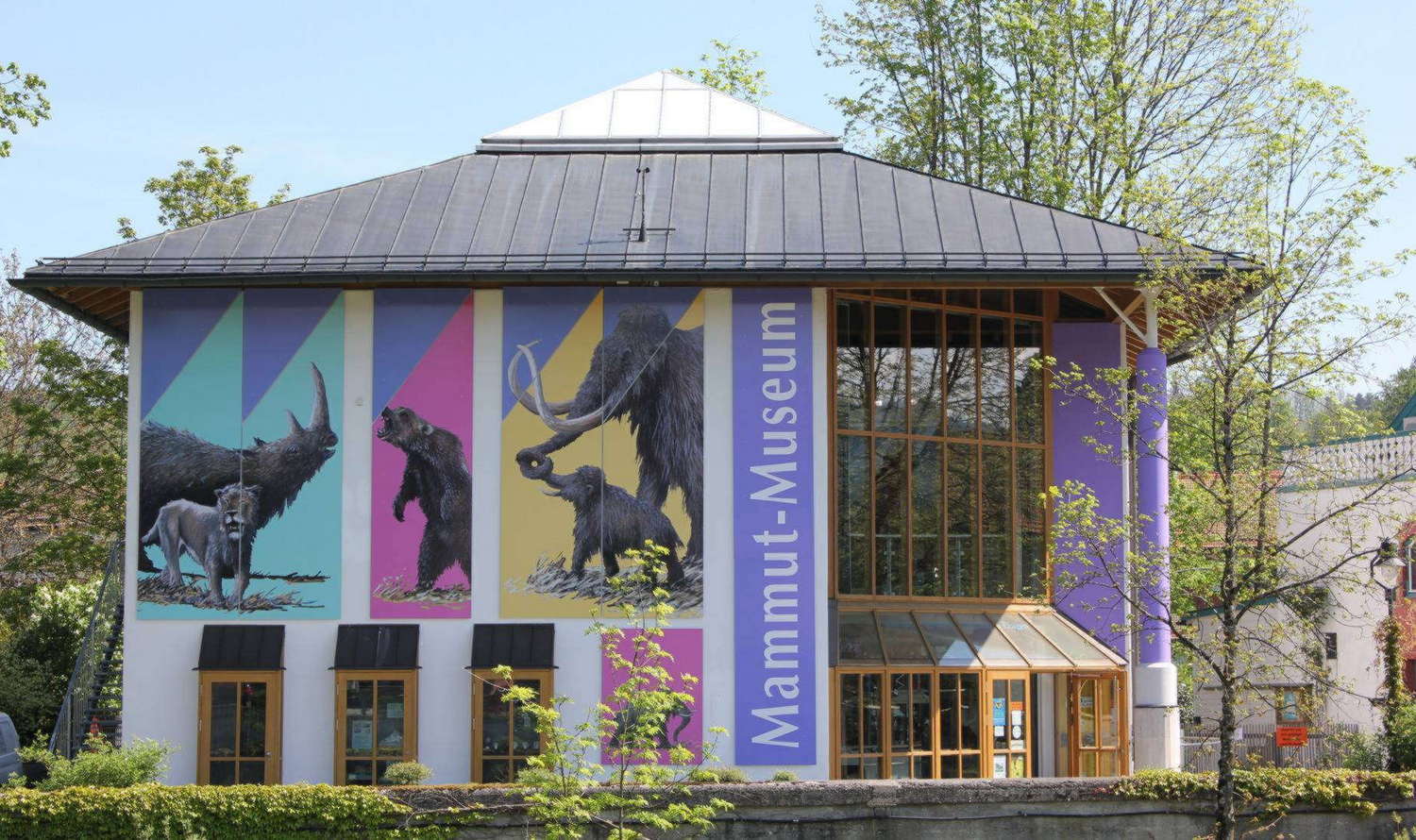Is it possible to walk past a museum with a mammoth standing at the entrance — a huge one, but clearly good-natured? A sign at his feet informs us that the mammoth's name is Rudy. The giant is the symbol of the Natural History Museum and of mammoths. Cross the threshold and you can see the Earth as it was 250 million years ago.
It is no coincidence that the museum was built in Siegsdorf. The bones of a mammoth from around 45,000 years ago were discovered here in 1975. The reconstructed skeleton of this extinct mammal has a place of honour in the exhibition. Next to it are the skeletons of animals that inhabited our planet during the Ice Age. But the museum takes visitors back to a much older time. Visitors learn how minerals are formed and where oil and iron ore come from in the Earth's interior.

A large part of the exhibition is devoted to palaeontology. Giant ammonite shells, prehistoric lizards and intimidating megalodon sharks are on display. Fossils found in Bavaria with imprints of ancient plants are displayed in showcases.
But the most exciting part of the museum for children is the caveman cave. The Neanderthal figures sitting by the fire and the animal skins on the floor and walls give an idea of how our distant ancestors lived hundreds of centuries ago. As well as people, animals used to hide in caves, so there are skeletons and pictures of ancient animals — a cave bear and a cave lion — nearby.
The last exhibition is dedicated to the achievements of the Stone Age. The crude stone tools may seem primitive today, but they were once an invention that played an important role in human history.

After the tour, children will want to have their picture taken with Rudy the mammoth, like an old friend. A sculpture of a Barta bear and a small playground await them in the museum courtyard. A visit to the museum is highly recommended if you're holidaying at Reit im Winkl with a child.











